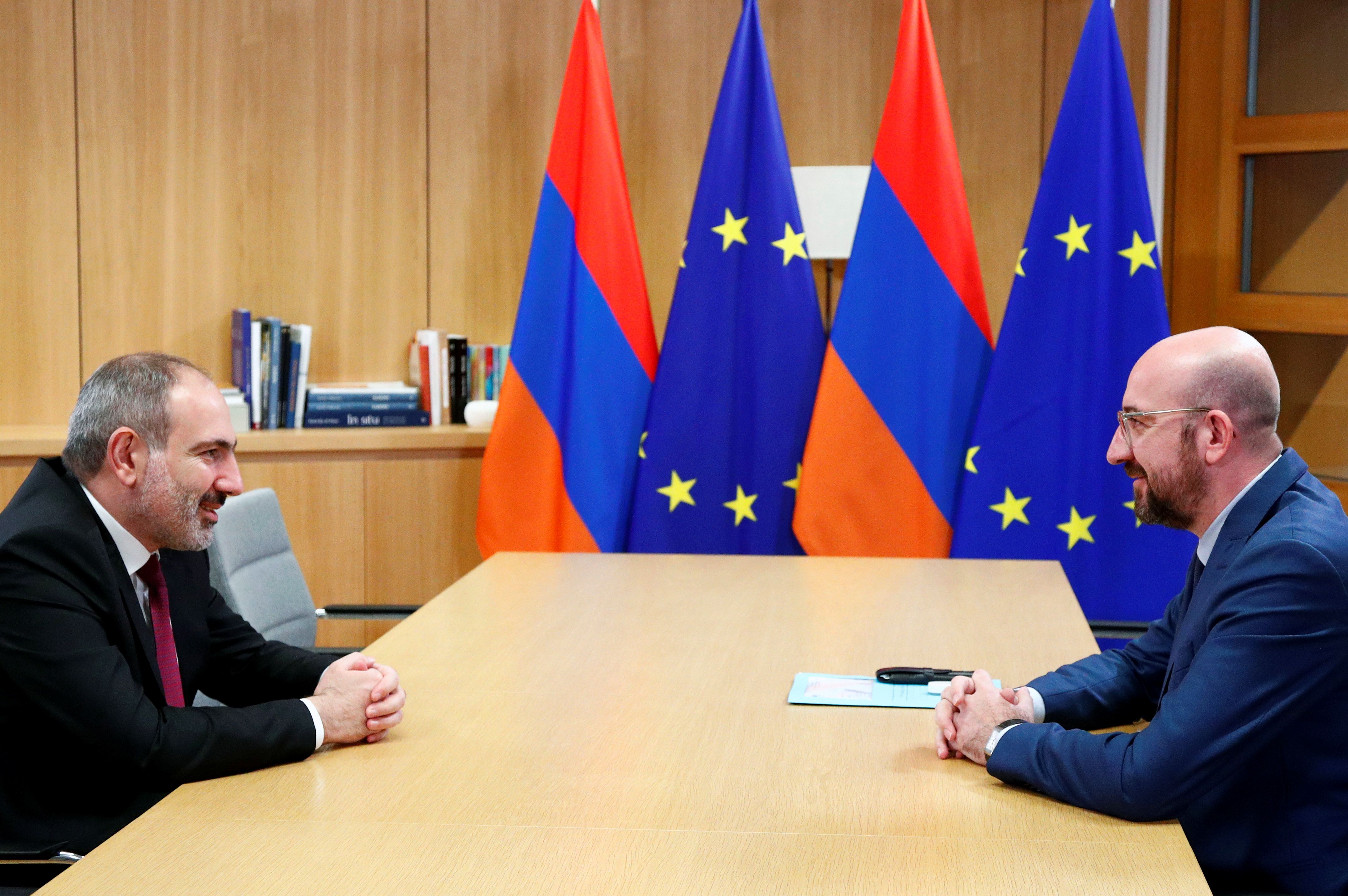CEPA as a Model of Cooperation: The Example of EU-Armenia Relations

CEPA was signed on 24 November 2017. About 80% of it has been implemented since 1 June 2018, pending ratification by the Union and its Member States. The necessity of ratification resulted from the mixed nature of CEPA, which includes provisions that do not fall under the exclusive competences of the EU and must be approved by all Member States. Ultimately, from March this year the provisions on anti-corruption, anti-money laundering and terrorist financing, legal cooperation, employment, social policy and health, among others, entered into force.
Reasons for Concluding CEPA
CEPA replaced the outdated 1996 Partnership and Cooperation Agreement and the previously negotiated AA, including a Deep and Comprehensive Free Trade Area (DCFTA), which was not signed by Armenia after its decision to join the EAEU in autumn 2013. The decision was made under pressure from Russia, which signalled a possible deterioration of the terms of cooperation between the two countries in the key areas of security and energy for Armenia.
Armenia was faced with the necessity to abandon the AA with the EU also for legal reasons. Agreements containing a DCFTA provide for the creation of a free trade area, which in principle involves the elimination of quotas and tariffs in trade between EU countries and the given partner. Cooperation within the EAEU, on the other hand, imposes on the participating countries a customs union regime, that is, a free trade area combined with a common customs tariff towards third countries, including EU Member States. Due to the incompatibility of the two systems, it is not possible to participate in both at the same time. The parties, however, wanted to tighten their cooperation, and therefore they worked out a solution in the form of a new type of agreement.
The EU concluded CEPA to emphasise the effectiveness of the EaP and its presence in the region, perceived by Russia as in its sphere of influence. This was in line with the Union’s postulate contained in the 2016 EU Global Strategy of strengthening the independence of the EaP states and enabling them to decide independently about the shape of relations with the EU. In addition, the Union’s flexible approach also was to encourage the intensification of cooperation with Belarus and Azerbaijan, EaP countries that have not yet concluded “new generation agreements” replacing the contractual arrangements concluded before the establishment of the EaP. From Armenia’s point of view, CEPA is important to create the image of a bridge state between the EU and the EAEU, and for many politicians to emphasise their independence from the influence of pro-Russia oligarchs. It is also crucial to tighten economic cooperation, even to a limited extent, with the EU, Armenia’s second-largest trading partner with which exchange accounts for about 20% of the country’s trade.
The Specificity of CEPA
In symbolic terms, CEPA was to remain closer to the Enhanced Partnership and Cooperation Agreement (EPCA), an agreement concluded with Kazakhstan and negotiated with Kyrgyzstan (members of the EAEU that are also part of the EaP). This is evidenced by its title, which does not use the word “association”, as is the case with the agreements with Ukraine, Georgia, and Moldova, but “partnership”, a less intense form of cooperation. In terms of the economy, the lack of a DCFTA is the most important common point that makes CEPA similar to EPCA. In addition to limiting trade cooperation, it reduces the Union’s ability to apply conditionality—making additional benefits from the partnership conditional on meeting certain political or economic criteria.
However, this is where the most pronounced similarities to the EPCA end. CEPA is in many respects closer to the characteristics of the AAs (on the basis of which it was developed). While cooperation in many areas mentioned in the agreements and CEPA are also regulated in the agreement between the EU and Kazakhstan, the scope of the EPCA remains narrower. Only agreements with EaP states contain provisions on internal reforms, transboundary cooperation, broad guarantees of mobility for all citizens (not limited to selected groups), and communications services. Tightening of mutual cooperation is also evidenced by the establishment—next to the Council, the Committee and the Parliamentary Committee, characteristic of both AAs and partnership agreements—of the Civil Society Platform, which is established only in relations between the Union and EaP states. CEPA also contains provisions on the gradual and dynamic approximation of laws and a mechanism for monitoring this process, which are present in the AAs and which do not appear in the EPCA.
Like the AAs, CEPA is to gradually bring Armenian legislation closer to the acquis, but with the difference that it is not to lead to an association of the partners. While this was intended to enable Armenia to fulfil its obligations as a member of the EAEU, the line between partnership and association remains fluid. This may cause legal conflicts if the EAEU regulatory framework expands. The EU rejected the Armenian side’s request to add a carve-out clause allowing Armenia to derogate from CEPA provisions that are inconsistent with future EAEU regulations. This means that the Union, despite concluding a limited agreement with Armenia, does not agree to completely subordinate bilateral relations to Armenia’s obligations resulting from its membership of the EAEU. Moreover, the Armenian side is also showing greater interest in cooperation with the EU than it seems from its membership of the EAEU. For example, CEPA contains arrangements for services that formally fall within the scope of cooperation within the EAEU, the standards of which are not always effectively implemented. In view of dissatisfaction with the economic effects of membership of the EAEU, there have already been demands in the Armenian parliament to withdraw from it. This could translate into an expansion of cooperation with the EU, but at present it is rather unlikely.
Conclusions and Perspectives
From the point of view of the adopted legal solution (maintaining the closest possible cooperation despite the lack of a DCFTA), CEPA is a new model in the EU’s relations with the EaP. It is the first agreement of this type signed between the EU and an EaP state that is also a member of the EAEU. Practice will show whether it will actually enable Armenia to cooperate with both Russia and the EU at the same time.
Due to the lack of provisions on a free trade area, CEPA will not facilitate economic cooperation between the EU and Armenia to the same extent as the AAs. However, it is the basis for strengthening political cooperation to a greater extent than the EU’s agreements with EAEU countries that are not part of the EaP. For Poland, the initiator of the EaP, this creates the possibility of greater involvement in the EU neighbourhood, including building civil society and exchanging good practices on transformation. In addition, CEPA symbolises the change in the EU’s approach to the EaP countries, away from imposing standard solutions (as in the AAs with Georgia, Moldova, and Ukraine) and towards better adaptation to the needs of the partners.
In the longer term, depending on the changes in domestic politics, this form of partnership could potentially be interesting for Belarus, the only EaP state apart from Armenia that is also a member of the EAEU. Due to Belarus’ strong dependence on Russia and the current internal situation, which affects its willingness and ability to implement the reforms expected by the EU, the Union will probably have to agree to even more concessions than in the case of Armenia. Moreover, as there are no other countries in a similar situation, this model will not be used on a wider scale. Despite not belonging to the EAEU, Azerbaijan, which is in the EaP, favours more limited cooperation with the EU for the time being. An additional obstacle to trade liberalisation, even at the CEPA level, is the lack of membership of Belarus and Azerbaijan in the WTO (the terms of cooperation with the EU, which is a WTO member, should not be more favourable than those offered by the EU to other members of this organisation).
CEPA also is not suitable in the case of Russia, which rejected the EaP as a model of relations with the EU, claiming it contained political conditionality, even before the suspension of talks on concluding a new cooperation agreement in response to Russia’s annexation of Crimea.


